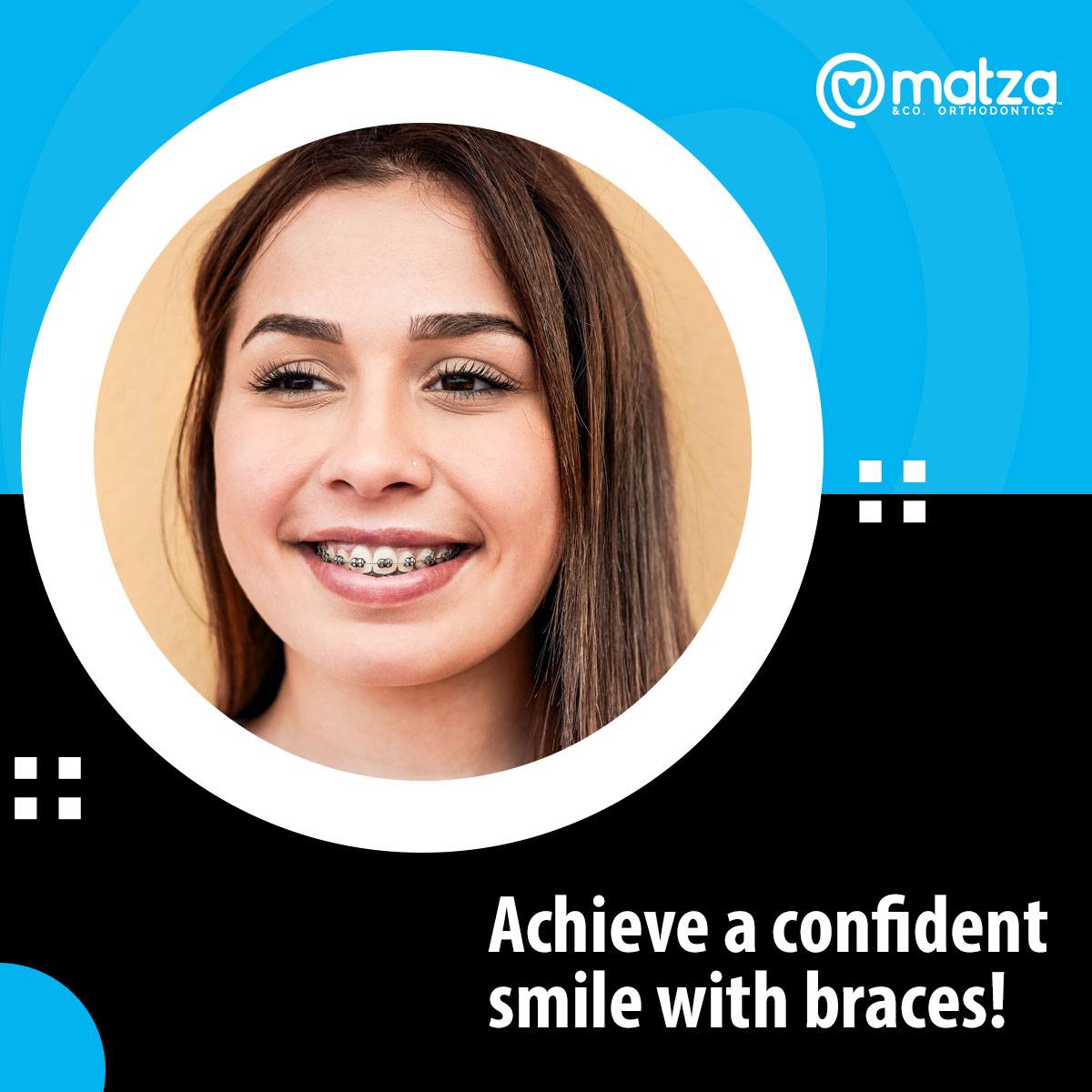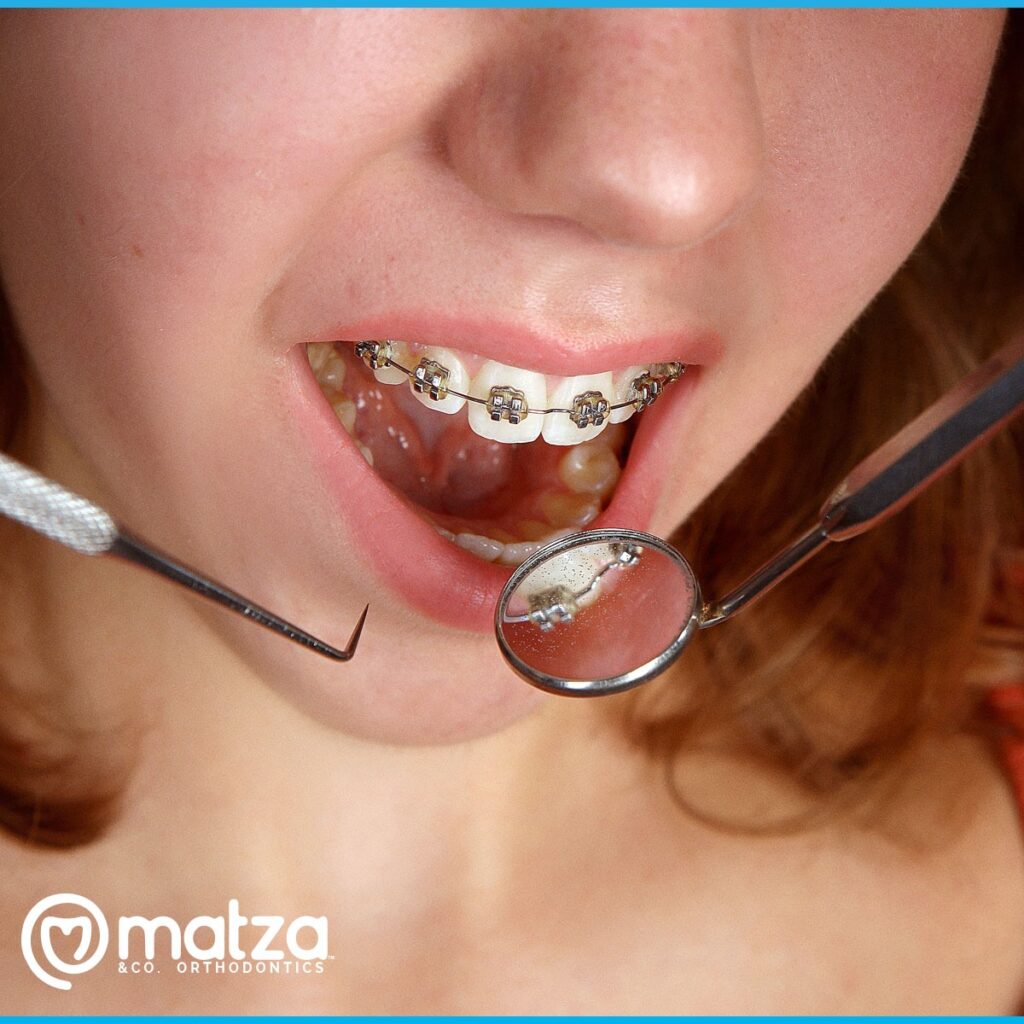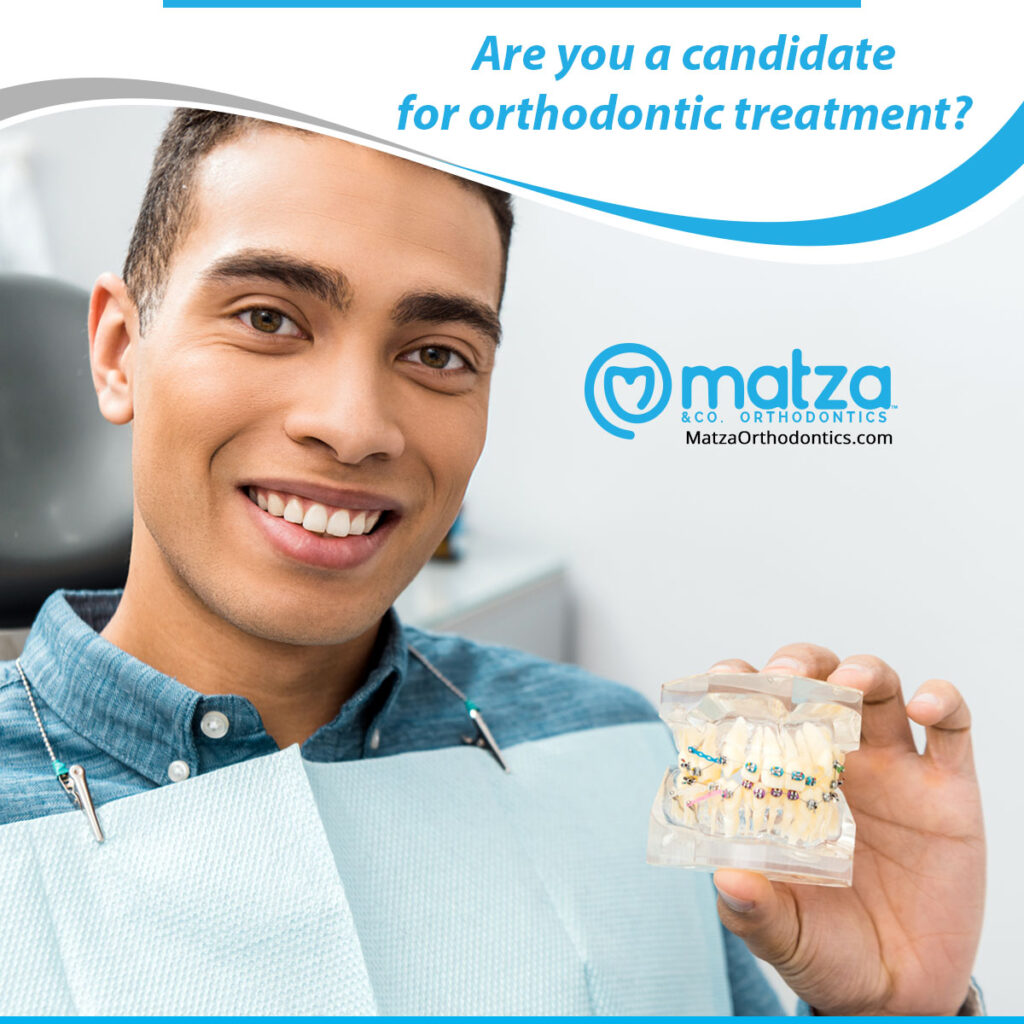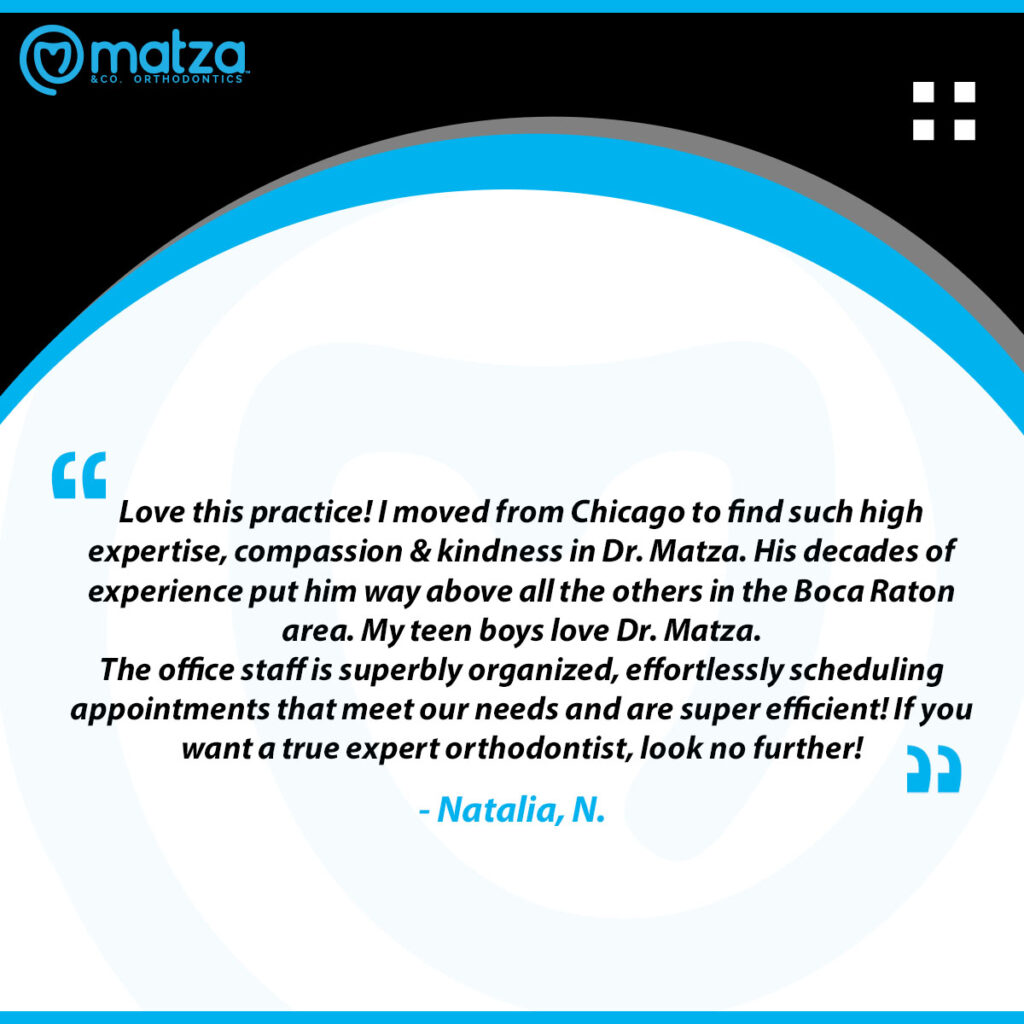Solutions for Crooked Teeth

Crooked teeth can be more than just a cosmetic concern. Misalignment can impact oral hygiene, leading to issues like cavities and gum disease. Beyond that, it can also affect self-confidence and even bite function. Fortunately, effective treatments are available to correct misaligned teeth and restore your smile. Let’s explore your options and find the best solution for you. And remember, Dr. Matza is an expert in complicated cases, so he and his team can assist your smile, whether your situation is basic or complex.
Crooked or misaligned teeth can affect your oral health and self-image. They often make teeth harder to clean and can greatly impact your appearance. In severe cases, they make day-to-day life more difficult.
Fortunately, crooked teeth can be treated. Which type of treatment works best for you will depend on the severity of the misalignment, as well as your budget and other factors.
Here are four kinds of treatment that can fix misaligned teeth:
1. Braces
Braces may be the best-known way to fix crooked teeth. They work by exerting pressure on the teeth, bringing them into alignment over several months or years. Along the way, they are adjusted and tightened as needed.
All braces consist of brackets and wires. One bracket is bonded to each tooth. A wire, called an archwire, holds the brackets together and applies pressure to shift teeth into alignment.
However, there are different options for how braces look, feel, and attach to your teeth. Here are four types of braces to choose from:
Traditional Metal Braces
Traditional metal braces are the most common. The brackets are made of high-grade stainless steel. They’re secured to the archwire with metal ties or elastic ligatures (rubber bands).
While these braces are well-established and highly effective, they are very noticeable.
Ceramic Braces
Ceramic braces, also known as clear braces, are the same shape and size as metal braces and work in the same way. The key difference is that they blend in with your natural tooth color, making them less noticeable.
These braces are a little less durable than metal ones and can take longer to do their job. But they make a great option for image-conscious teens and adults.
Lingual Braces
Lingual braces are another alternative to traditional braces. They’re made of the same kind of metal, but they attach to the back of the teeth (where the tongue hits when speaking).
This makes lingual braces another option for people who want their braces to be less noticeable. However, they’re significantly more expensive than other kinds of braces.
Self-Ligating Braces
Self-ligating braces are like standard metal braces but the brackets are designed differently. This allows them to stay in place on the archwire without any ties or ligatures.
These braces can be more comfortable than traditional ones and require fewer visits to the orthodontist for adjustments. They cost about the same or slightly more than traditional braces.
2. Clear Aligners

Clear aligners, also known as invisible braces, are removable plastic trays that fit over your teeth. Like braces, they align teeth by putting constant pressure on them over time.
The clear trays are custom-made to fit your teeth and shift them gradually. Unlike traditional and ceramic braces that need to be tightened as your teeth move, these trays are replaced every one to two weeks.
Clear aligners are a great alternative to traditional braces for milder cases of misalignment. They can fix many of the same teeth alignment issues that braces can. They’re also more esthetically pleasing to many people.
Another advantage of clear aligners is that they’re removable and easy to clean (unlike braces). For best results, you must wear the aligners for at least 20 to 22 hours daily.
There are two main types of clear aligner options:
- In-office aligners (like Invisalign) are the oldest type of clear aligners. They require routine office visits with your orthodontist, and are recommended for people with more complex teeth alignment needs.
- At-home aligners, which are cheaper than in-office aligners. Treatment is monitored remotely and can be highly effective for milder cases.
3. Jaw Surgery
Severe malocclusion (“bad bite”) often involves issues with the jaw, not just the teeth. If your crooked teeth are related to jaw misalignment, you may need corrective jaw surgery to resolve the problem completely.
Also known as orthognathic surgery, this surgery is generally combined with orthodontic treatment with braces. Together, these treatments can fully correct severe bite issues.
For children with misaligned jaws, surgery isn’t always necessary. Braces can be combined with orthodontic appliances that help direct jaw growth.
However, adults’ jaws are already fully developed. Surgery is more likely to be needed to bring them into proper alignment.
4. Cosmetic Dentistry Options
Cosmetic treatments can also “fix” misaligned teeth by covering or partially replacing them. They can make teeth appear to be straighter or have a better shape. Note that these options aren’t recommended if your teeth are severely misaligned and pose a risk to your oral health. They may enhance a tooth’s appearance, but they won’t solve the underlying problem.
Veneers
Veneers are a simple aesthetic solution for crooked teeth. These composite or porcelain shells cover the front surface of teeth to make them look straight.
Most veneers are expensive and permanent (lasting 10 years or more with proper care). However, more affordable snap-on or removable veneers are also available.
Dental Bonding
Dental bonding is another cosmetic option for crooked or misshapen teeth. Whereas a veneer covers the front of a tooth, dental bonding fills in gaps with composite resin.
This treatment generally requires one office visit, while veneers can take two or more appointments. Bonding is also reversible.
Dental Crowns
This procedure involves tooth restructuring, followed by placing a porcelain or metal crown over the tooth.
Dental crowns are typically only used for restorative reasons, such as protecting a formerly broken tooth or after a root canal. They’re not a common treatment for crooked teeth.
Should You Straighten Crooked Teeth?
In general, yes. Misaligned or overlapping teeth are harder to clean and can play a big role in how you are seen by yourself and others. They put you at greater risk of:
- Tooth decay or damage
- Gum disease
- Speaking difficulties
- Jaw issues (such as TMJ disorders)
- Social and self-image issues
- Digestive problems
- Sleep problems (such as sleep apnea)
On the other hand, not all teeth are equally crooked. If you have just one or a few slightly misaligned teeth, they may not put you at risk for any of the above problems. They may simply be a minor and unique aspect of your appearance.
Ultimately, getting treatment to align your teeth is up to you. Fortunately, there are many options available, whether your needs are mild or severe.

How Much Does it Cost to Fix Crooked Teeth?
The cost of fixing a crooked smile varies depending on the structure of your teeth and jawline, your dental health, and the orthodontic treatment you choose. Insurance can sometimes be a factor as well.
What Causes Crooked Teeth?
Crooked teeth have a variety of causes, including:
- Poor oral posture; teeth not touching when the mouth is closed
- Diets high in soft and processed foods
- Childhood habits such as thumb sucking and mouth breathing
- Genetics (especially in cases of prognathism)
- Dental or facial injury
- Early loss of baby teeth
- Little or no breastfeeding
Misaligned teeth and jaws have become more prevalent in recent generations.3, 4 Changes in diet and oral posture have been major contributors to this increase. Better oral posture may improve teeth alignment in children.
However, once adult teeth (and jaws) have become crooked, simply eating better or improving oral posture will not necessarily correct them. Orthodontic treatment (and sometimes surgery) is often needed to restore proper alignment.
Summary
Crooked teeth are a relatively common concern, and there are various ways they can be treated. Most people with crooked teeth get orthodontic treatment with either braces or clear aligners.
Depending on the severity of your teeth misalignment and any other needs you may have, you may also require corrective jaw surgery. On the other end of the spectrum, a slight imperfection can be left alone or given a cosmetic treatment.

Ready to transform your smile? Dr. Matza can help you explore your options for straighter, healthier teeth. Let’s find the perfect treatment plan for you! Schedule a consultation today at 561.368.3480. Check our IG @matzaorthodontics to learn more.
Reference:[https://www.newmouth.com/blog/fix-crooked-teeth/ ]
